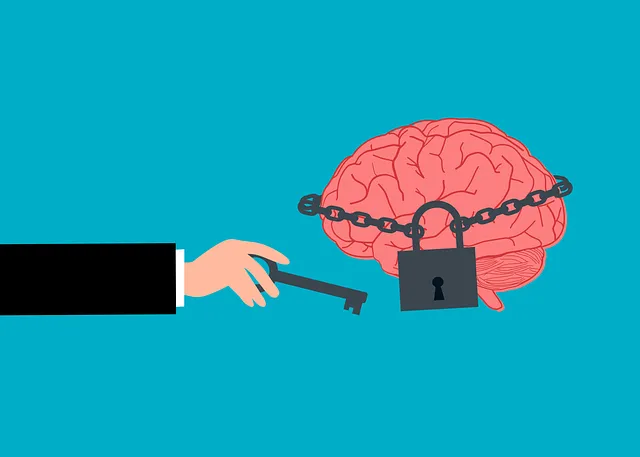Risk assessment is vital for enhancing patient safety and well-being in mental health facilities, like Kaiser's inpatient units. The Kaiser Inpatient Mental Health Model emphasizes holistic care, combining physical and mental treatments for complex psychiatric disorders. By identifying risks through comprehensive assessments, including psychological vulnerabilities and social factors, healthcare providers can proactively mitigate hazards and improve care quality. A successful harm minimization plan involves multidisciplinary teams using evidence-based practices to build resilience and develop coping skills. Continuous improvement, regular reviews, and staff training on emotional intelligence enhance the long-term effectiveness of these strategies, aligning with best practices for inpatient mental health care.
Inpatient mental health care, much like any high-stakes environment, requires rigorous risk assessment and harm minimization planning. This comprehensive guide explores these essential components, using the Kaiser Inpatient Mental Health Model as a foundation. We’ll delve into identifying risks specific to this setting, developing robust strategies, and implementing best practices, including lessons from industry leader, the Kaiser system. Understanding and mitigating risks is key to providing safe, effective care for vulnerable patients.
- Understanding Risk Assessment: A Foundation for Harm Minimization
- The Kaiser Inpatient Mental Health Model: An Overview
- Identifying Risks in Inpatient Mental Health Care
- Developing a Comprehensive Harm Minimization Plan
- Implementation and Continuous Improvement Strategies
Understanding Risk Assessment: A Foundation for Harm Minimization

Understanding Risk assessment forms the bedrock upon which effective harm minimization planning is built. It involves a systematic analysis of potential risks and their likely impact on individuals or communities, especially those with mental health challenges like those Kaiser provides in its inpatient facilities. By identifying hazards present in various settings—be it at home, schools, or healthcare institutions—and evaluating their severity and likelihood, risk assessors can predict and prevent possible harms.
This proactive approach is crucial in enhancing patient safety and well-being, particularly for vulnerable populations. Incorporating strategies like Self-Care Routine Development for Better Mental Health and Trauma Support Services, as encouraged by Healthcare Provider Cultural Competency Training, ensures that risks are not only identified but also managed holistically. Such comprehensive planning enables mental health facilities, including Kaiser’s inpatient units, to create safer environments and foster positive outcomes for all patients.
The Kaiser Inpatient Mental Health Model: An Overview

The Kaiser Inpatient Mental Health Model is a well-established framework renowned for its comprehensive approach to treating individuals with severe mental health conditions. This model, pioneered by Kaiser Permanente, emphasizes a holistic view of patient care, focusing on both physical and mental well-being. By offering specialized inpatient services, Kaiser aims to provide intensive treatment and support for those experiencing complex psychiatric disorders.
In this model, the primary goal is to facilitate recovery and enhance patients’ quality of life. The program typically involves a team of experts, including psychiatrists, psychologists, social workers, and nurses, who collaborate to design individualized care plans. These plans often incorporate various evidence-based practices, such as Stress Reduction Methods and Burnout Prevention strategies, tailored to address the unique needs of each patient. The Kaiser approach ensures that patients receive not just medical treatment but also education, therapy, and skills training to manage their conditions effectively in the long term.
Identifying Risks in Inpatient Mental Health Care

Identifying risks in inpatient mental health care is a critical step for healthcare providers like Kaiser. In this setting, patients often face complex psychological and social challenges that can lead to various adverse outcomes. By conducting thorough risk assessments, healthcare professionals can proactively address potential hazards, ensuring patient safety and enhancing overall care quality. This process involves meticulously evaluating each patient’s history, current state, and environment to pinpoint specific risks associated with their stay.
One key area of focus is understanding the individual’s psychological vulnerability, which may include symptoms of depression, anxiety, or psychosis. Additionally, social factors such as isolation, lack of support systems, or traumatic life events can significantly impact a patient’s risk profile. Employing confidence-boosting and empathy-building strategies throughout this assessment process is essential to foster open communication, encouraging patients to share their concerns openly. Furthermore, promoting emotional well-being through tailored interventions and activities can minimize risks and contribute to successful recovery outcomes in inpatient mental health care settings.
Developing a Comprehensive Harm Minimization Plan

A comprehensive harm minimization plan is an essential tool for organizations like Kaiser to effectively manage and mitigate risks associated with inpatient mental health services. This plan should be tailored to address the unique challenges and needs of the patient population, focusing on strategies that foster resilience building and coping skills development. By integrating evidence-based practices, facilities can ensure a holistic approach to emotional healing processes, ultimately enhancing patient safety and well-being.
The planning process requires a multidisciplinary team that includes medical professionals, mental health specialists, and support staff. Together, they should identify potential risks, assess their likelihood and impact, and design interventions aimed at prevention or early intervention. Incorporating strategies for crisis management, stress reduction, and trauma-informed care ensures that patients receive comprehensive support throughout their stay, promoting a safe and supportive environment.
Implementation and Continuous Improvement Strategies

Implementing a robust risk assessment and harm minimization plan is just the first step; continuous improvement is vital to ensure its effectiveness over time. Organizations like Kaiser Permanente, with comprehensive inpatient mental health services, recognize that this process is an ongoing journey. Regular reviews and updates are essential to adapt to changing environments, new research findings, and evolving best practices.
One effective strategy involves integrating Self-Awareness Exercises and Mindfulness Meditation into staff training programs. Enhancing Emotional Intelligence can improve professionals’ abilities to identify potential risks and implement timely interventions. By fostering a culture of continuous learning and reflection, these strategies empower caregivers to make informed decisions, ultimately leading to better patient outcomes and a safer environment for everyone involved, especially in the context of Golden rules and guidelines for inpatient mental health care.
Risk assessment and harm minimization planning are essential components of providing safe and effective inpatient mental health care. By understanding the nuances of risk assessment, adopting models like the Kaiser Inpatient Mental Health Model, and systematically identifying risks, healthcare facilities can develop comprehensive harm minimization plans. These strategies ensure that patients receive the highest level of care, while also fostering continuous improvement through implementation and monitoring. As highlighted by the Kaiser approach, a structured and proactive approach to risk management does make a difference—it’s a golden standard for ensuring patient safety and well-being.






